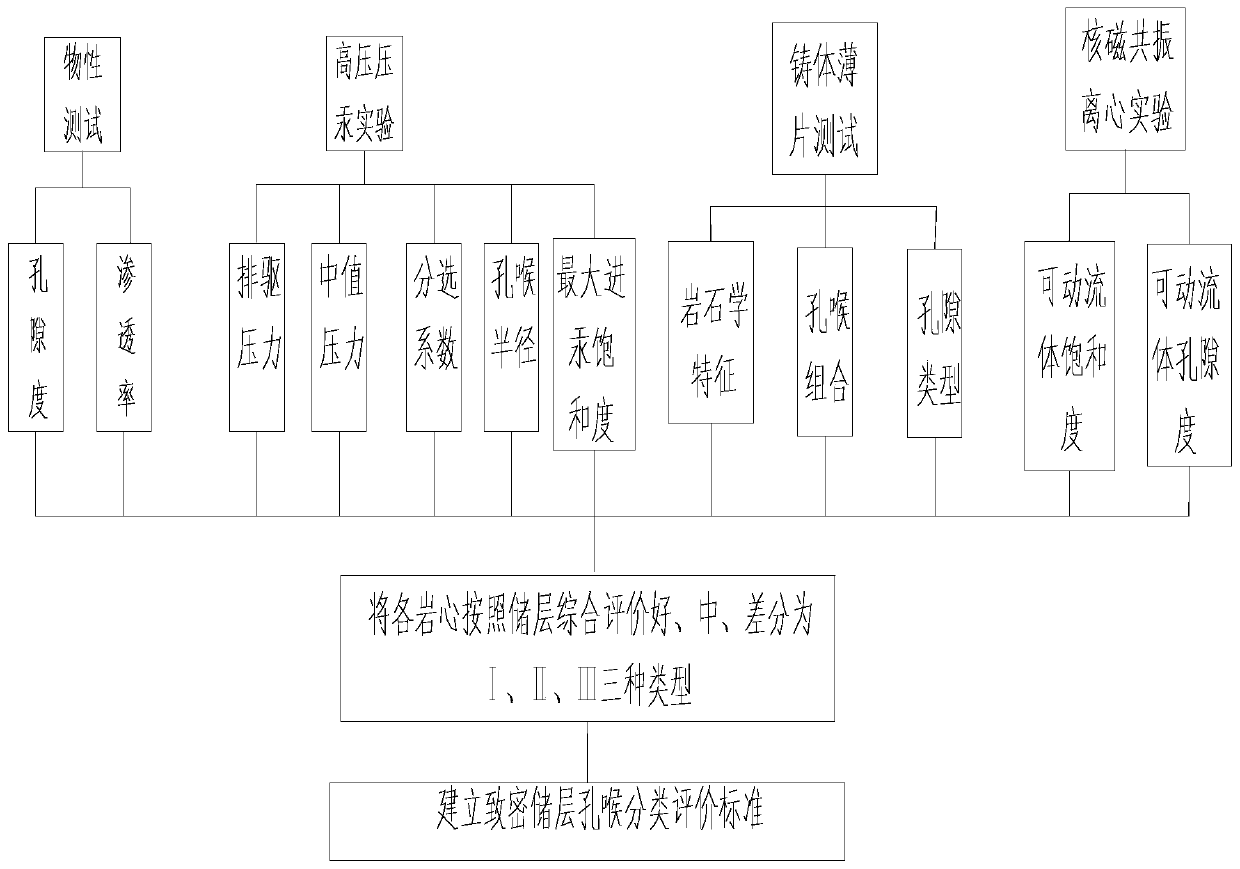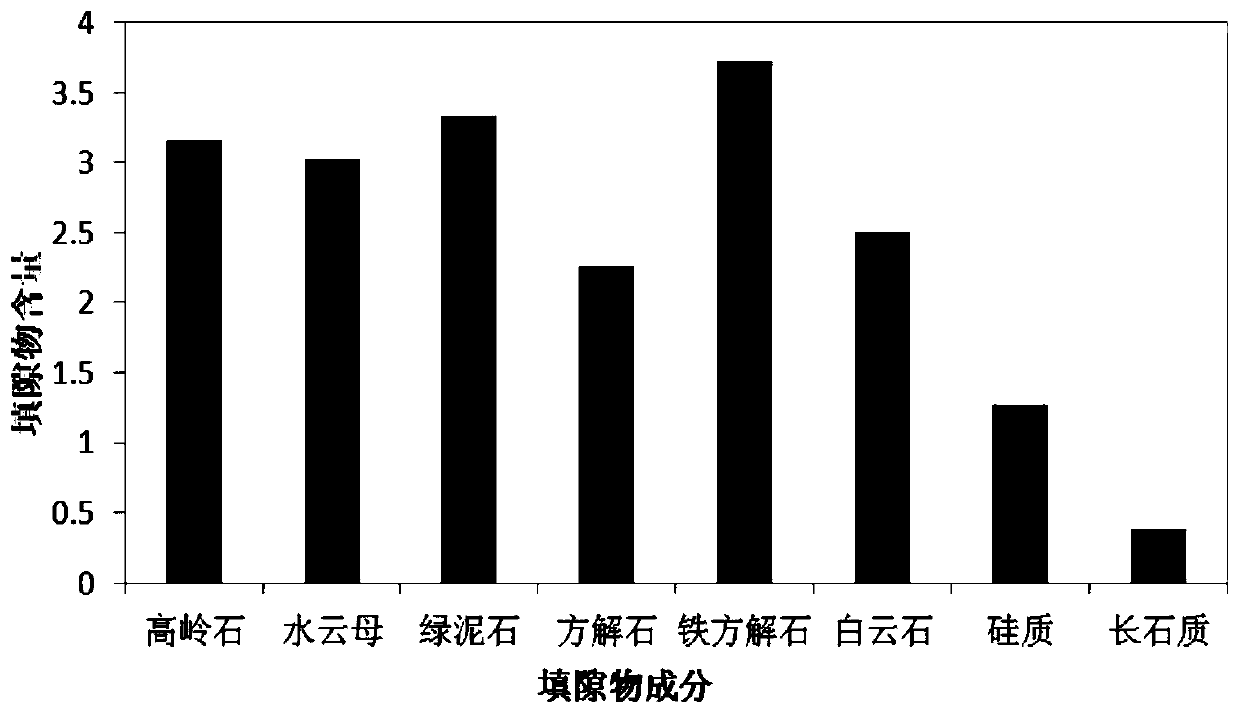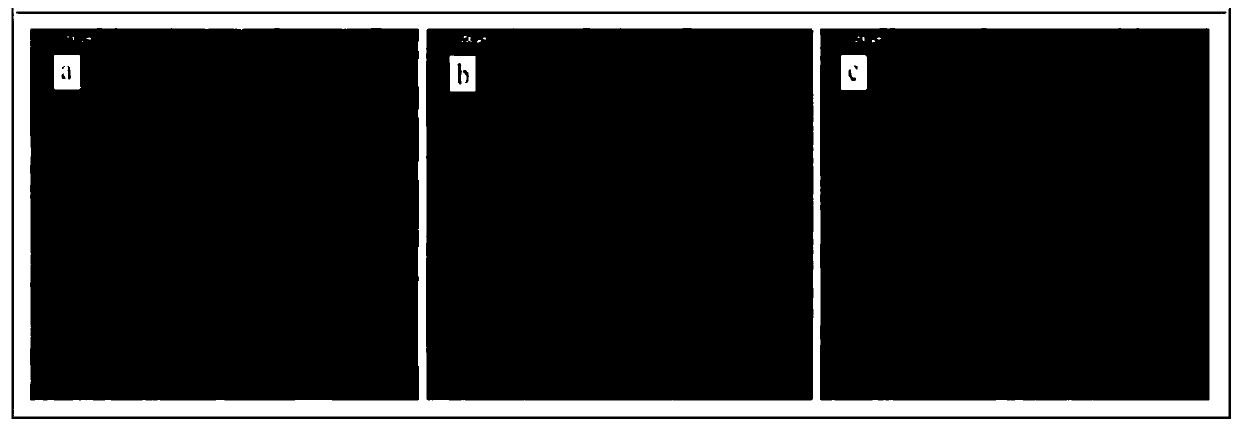Method for assessing classification standard of tight reservoir pore structure based on nuclear magnetic resonance
A technology of nuclear magnetic resonance and tight reservoirs, which is applied in suspension and porous material analysis, permeability/surface area analysis, measurement devices, etc., can solve the problems of high specific gravity of secondary pores, complex pore structure, low water flooding recovery, etc. problem, achieve accurate and scientific reservoir type, and improve the effect of accuracy
- Summary
- Abstract
- Description
- Claims
- Application Information
AI Technical Summary
Problems solved by technology
Method used
Image
Examples
Embodiment 1
[0030] Jiyuan Oilfield is located in the west of the Ordos Basin, straddling the Yishan Slope and Tianhuan Depression. The Triassic Yanchang Formation is divided into 10 oil-layer groups from top to bottom. Among them, the Chang 8 oil-layer group in the study area is relatively developed and is the main force of exploration and development. Reservoir group. Due to the compaction and diagenesis of the reservoir during the deposition process, the target reservoir rock is dense and has a large number of micro- and nano-scale pore throats, with an average porosity of 7.22% and an average permeability of 0.11×10 -3 μm 2 , belonging to tight sandstone reservoirs. The complex pore structure characteristics further complicate the seepage and distribution characteristics of fluids in the pore throats, which directly restricts the exploration and development of the Chang 8 oil layer group.
[0031] The invention is used to study the microscopic pore structure of the Chang 8 oil layer ...
PUM
| Property | Measurement | Unit |
|---|---|---|
| pore size | aaaaa | aaaaa |
| porosity | aaaaa | aaaaa |
| porosity | aaaaa | aaaaa |
Abstract
Description
Claims
Application Information
 Login to View More
Login to View More - R&D
- Intellectual Property
- Life Sciences
- Materials
- Tech Scout
- Unparalleled Data Quality
- Higher Quality Content
- 60% Fewer Hallucinations
Browse by: Latest US Patents, China's latest patents, Technical Efficacy Thesaurus, Application Domain, Technology Topic, Popular Technical Reports.
© 2025 PatSnap. All rights reserved.Legal|Privacy policy|Modern Slavery Act Transparency Statement|Sitemap|About US| Contact US: help@patsnap.com



